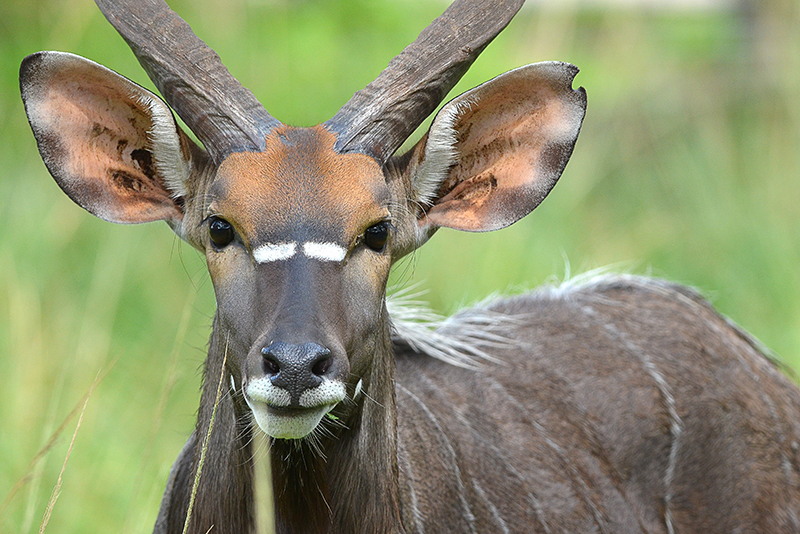Lowland nyalas live in herds of 2 to 30 individuals. However, they are not territorial and often have overlapping home ranges. Males will display and fight when a female is in estrus. With the exception of an alarm bark, they seldom vocalize and intra-species calls are quiet. They are also able to recognize and react to alarm calls made by impala, baboons, and kudu. Nyala may be active during the day, but it is more common for them to be active in the evening and night. They spend much of their day resting, particularly during the hottest parts of the day.
Fun Fact:
- Nyala are sexually dimorphic, meaning males and females look different, though males start out the same color as females and gain their adult coloring as they mature
Conservation Threats:
Least Concern








![tampa-640x300-54[29]-noarrow](jpg/tampa-640x300-5429-noarrow.jpg)



